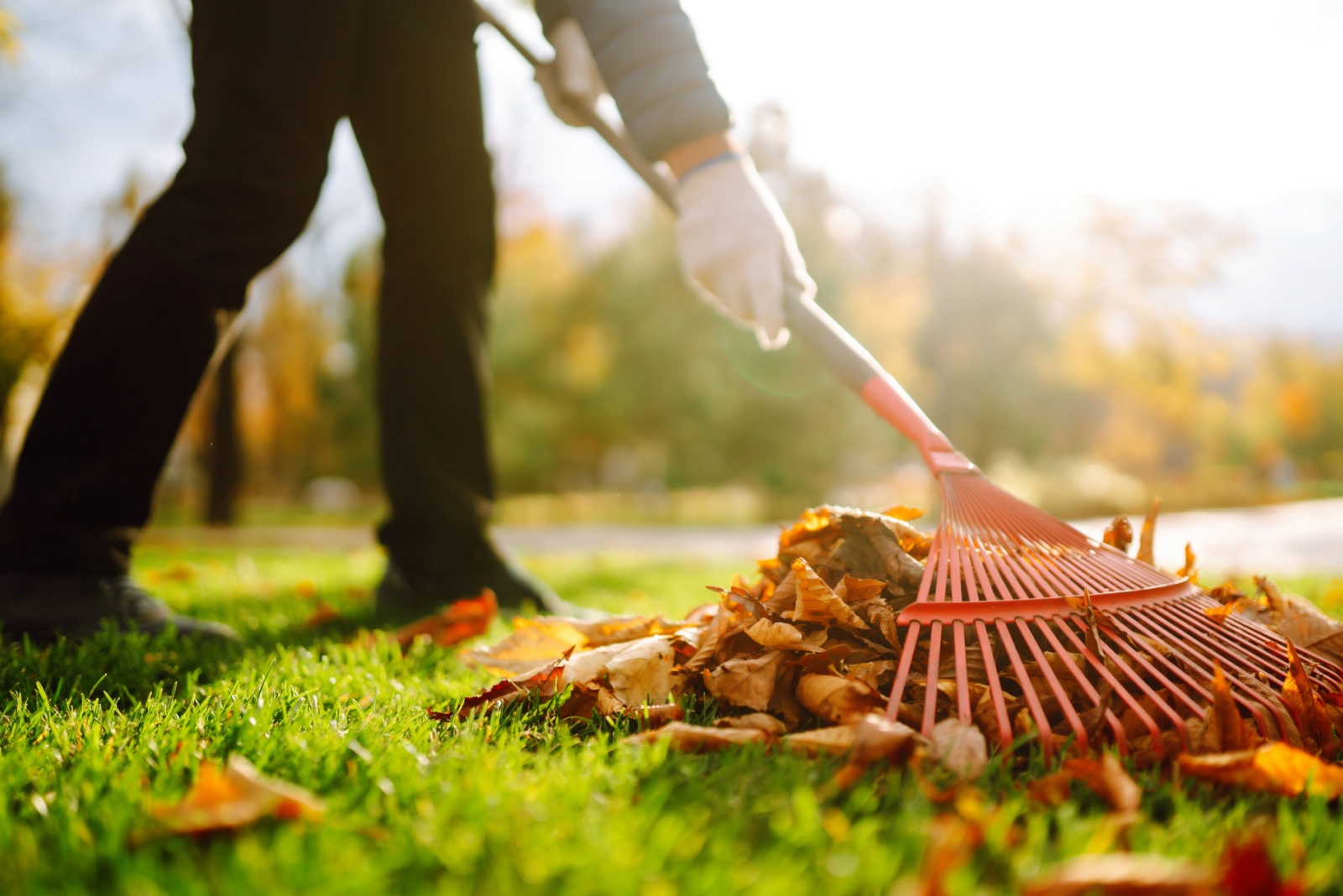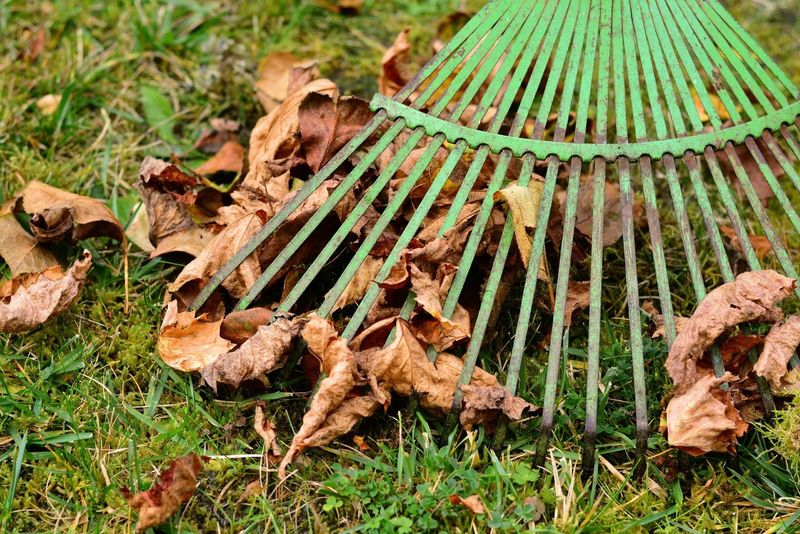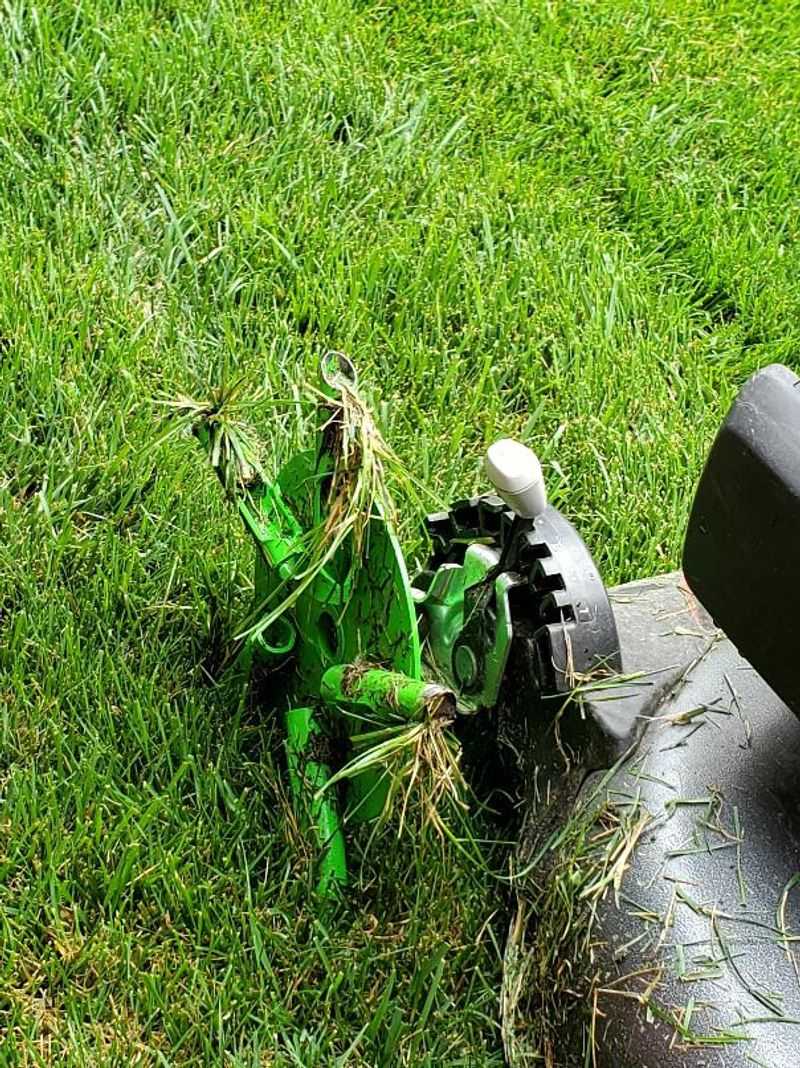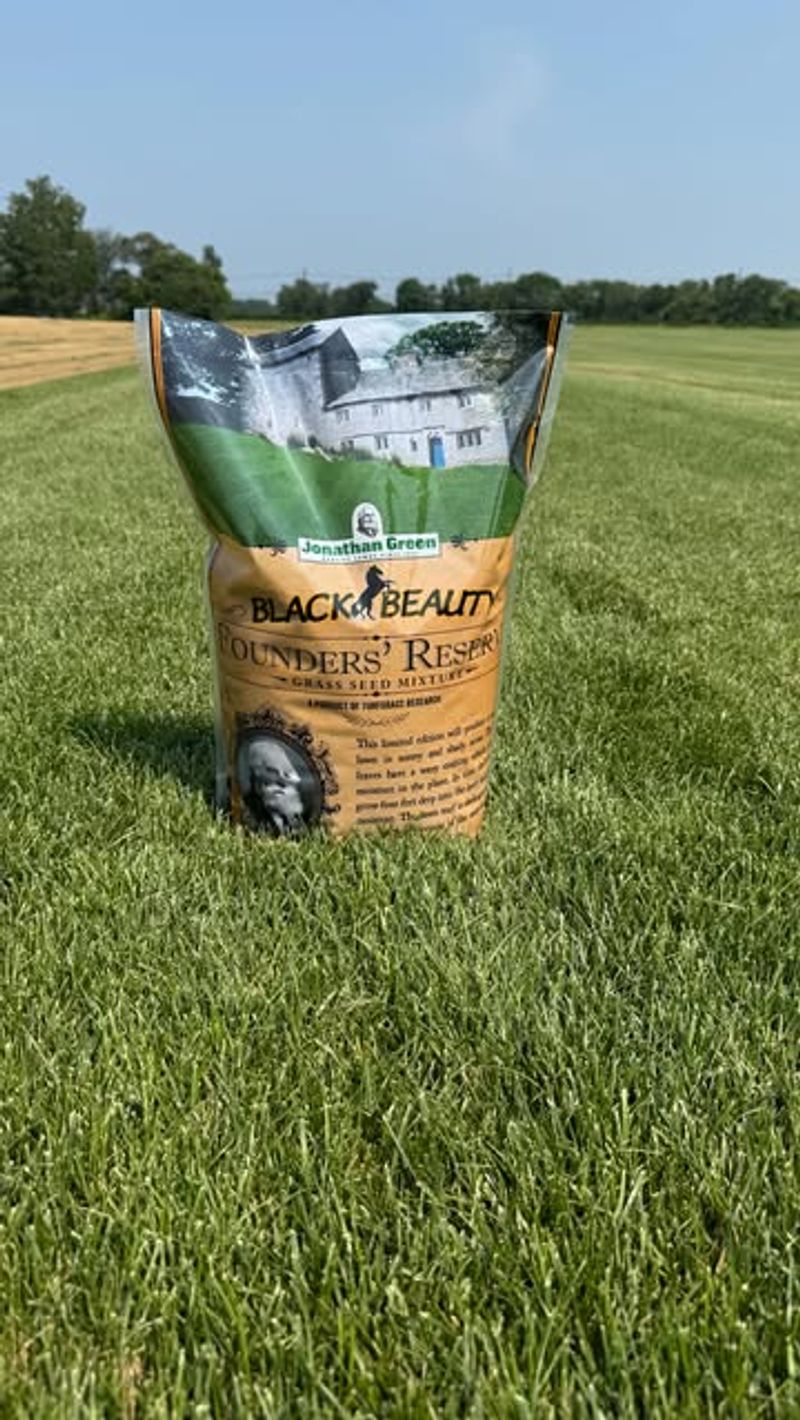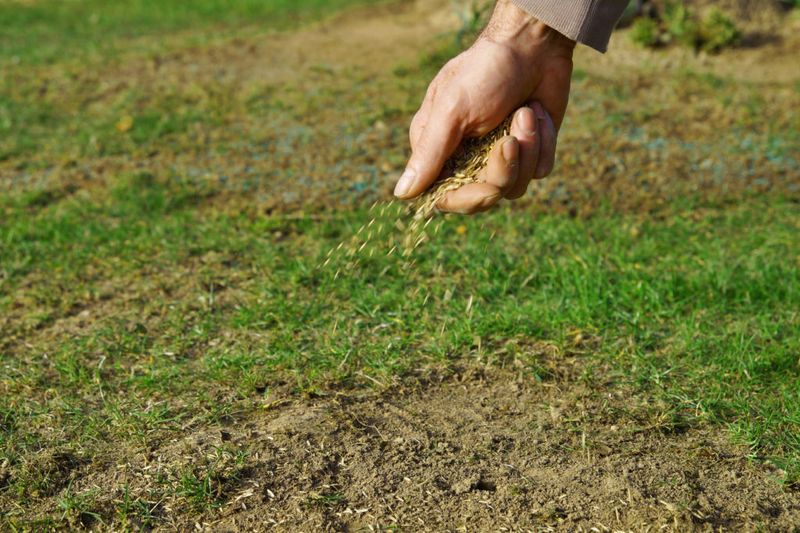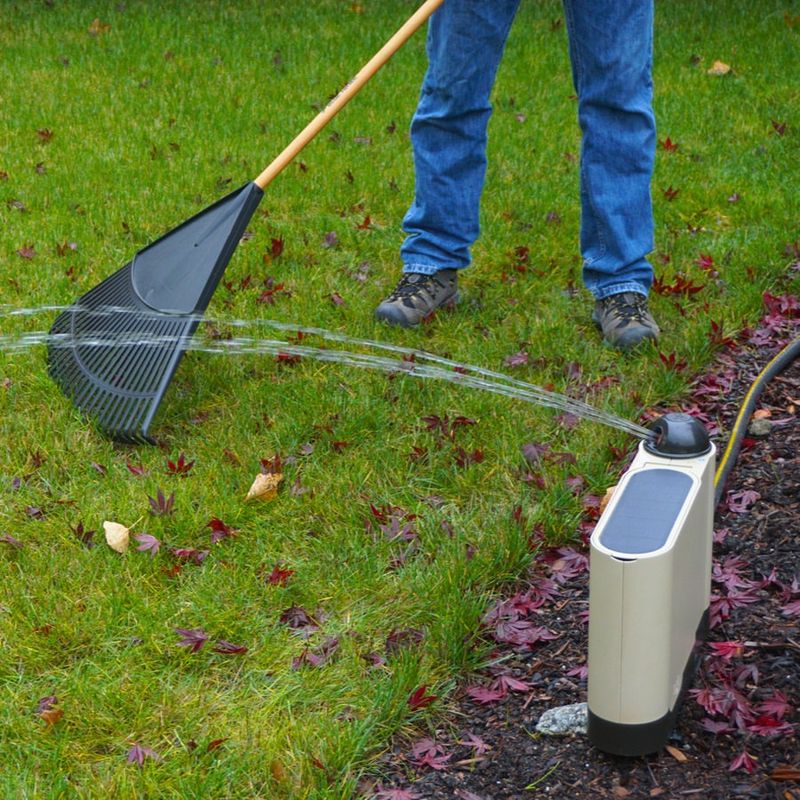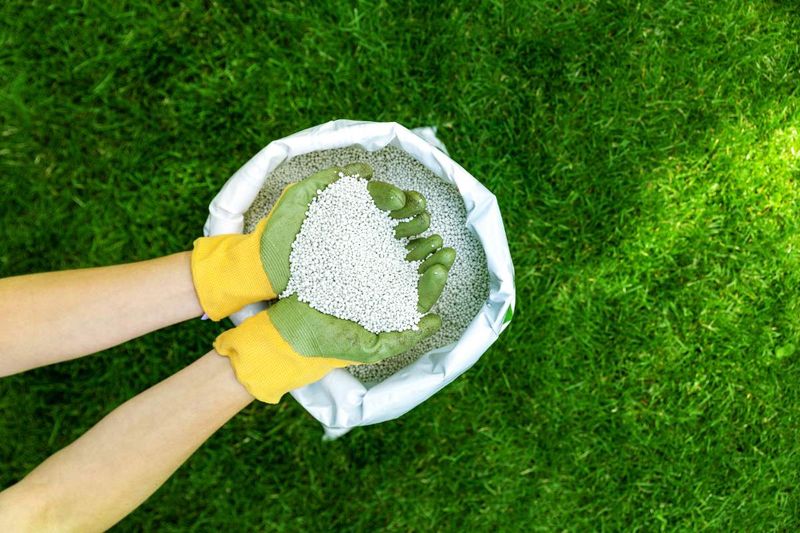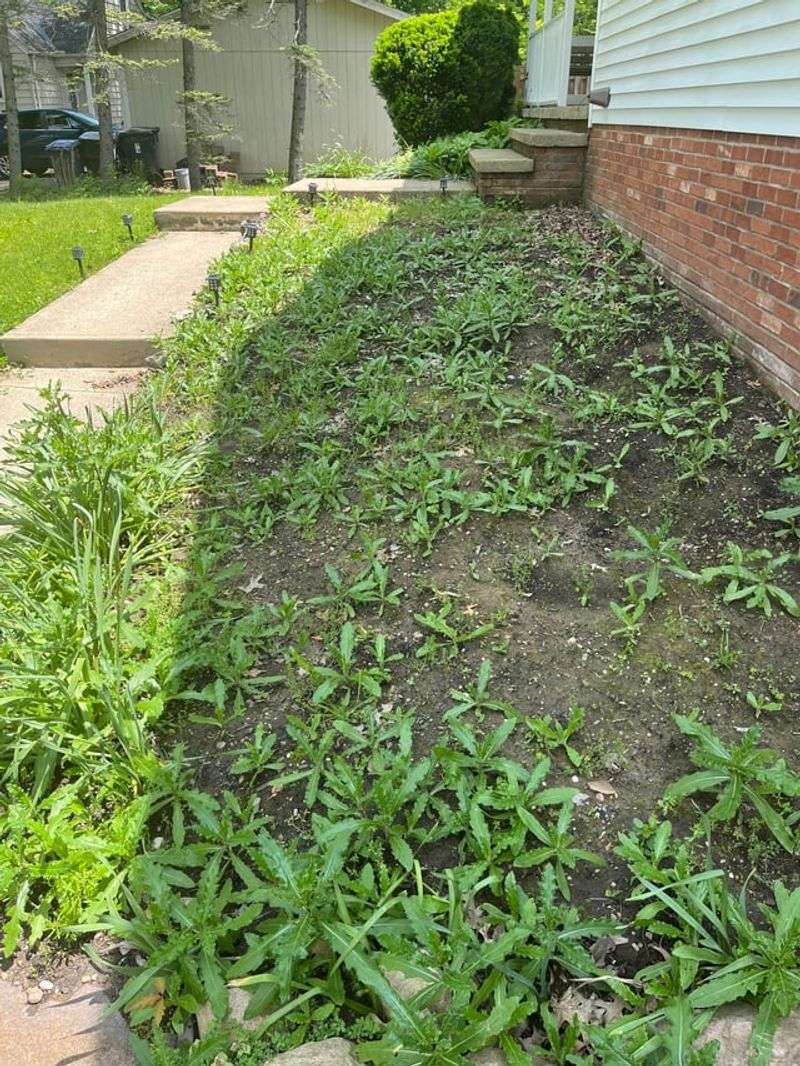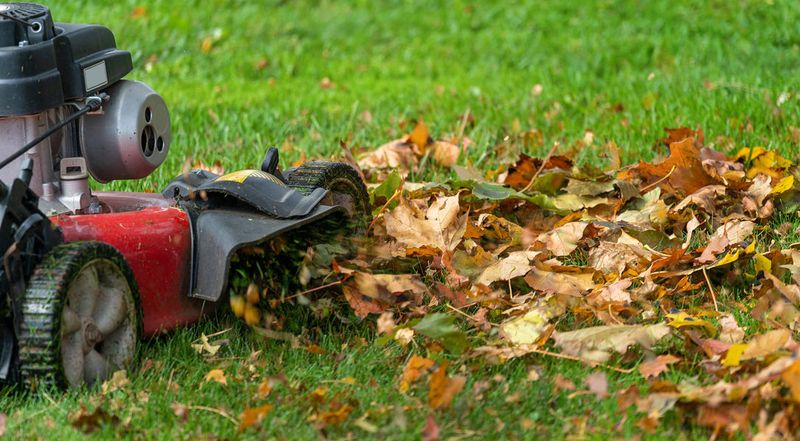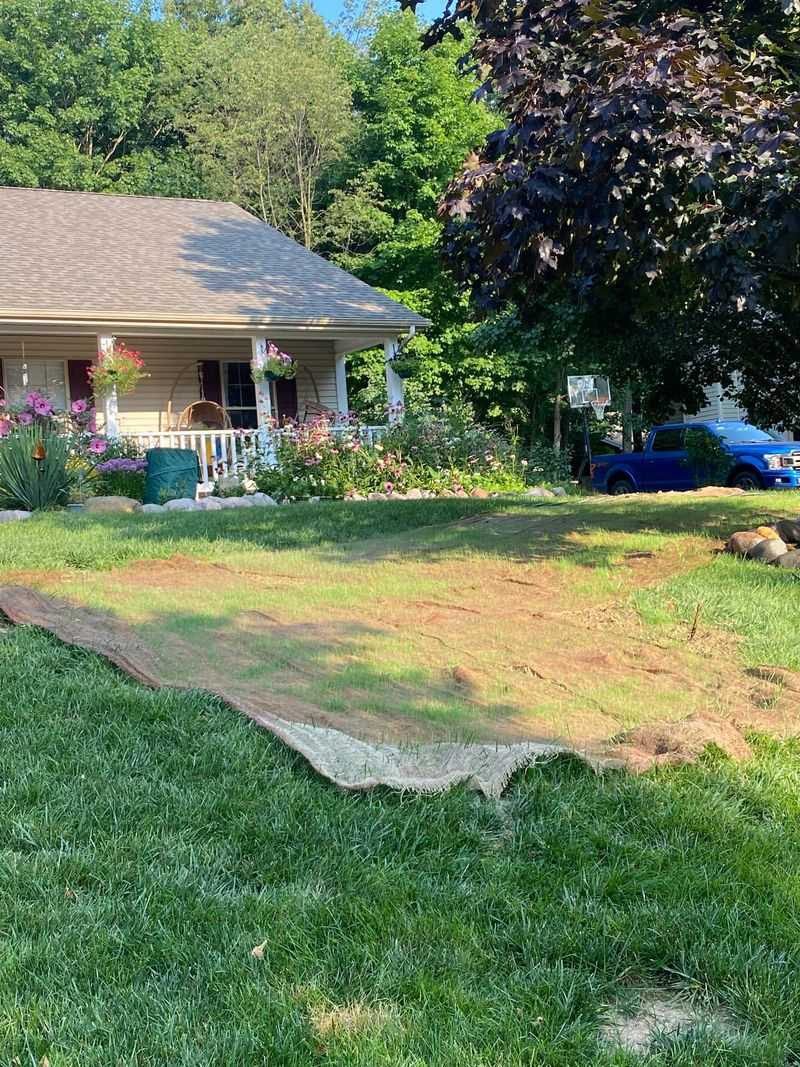Fall is a great time to show your Ohio lawn some love after the wear and tear of summer. Cooler temps and gentle rains create ideal conditions for recovery and growth.
Even as the grass slows above ground, the roots are busy strengthening below. This quiet activity sets the stage for a lush, resilient lawn come spring.
A little effort now—like aerating, overseeding, or feeding—goes a long way. Your lawn will thank you with greener, thicker blades when the snow melts.
1. Raking Away Leaves To Let Grass Breathe
Those colorful Ohio maple leaves might look pretty, but they can suffocate your grass if left too long. I learned this lesson the hard way my first autumn in Cincinnati when I postponed raking until Thanksgiving!
Regular raking prevents matted leaves from blocking sunlight and trapping moisture that leads to fungal problems. For smaller yards, a standard rake works fine, but for larger properties, consider a leaf blower or tow-behind lawn sweeper.
Don’t waste those leaves, though! They make excellent compost material or protective mulch for garden beds after shredding.
2. Aerating The Soil For Better Root Growth
Over time, Ohio’s clay-heavy soils become compacted, making it hard for water, nutrients, and oxygen to reach grass roots. Core aeration solves this problem by removing small plugs of soil across your lawn.
The best time for aeration in our region is September through October when the soil isn’t too dry or too wet. You can rent a core aerator from most hardware stores for about $50-80 per day, which is what I do each year with my neighbor.
Focus on high-traffic areas where compaction is worst, making multiple passes in different directions for the best results.
3. Choosing The Right Grass Seed For Ohio Lawns
Not all grass varieties thrive in our challenging Ohio climate with freezing winters and humid summers. For most yards across the state, a mix of Kentucky bluegrass, perennial ryegrass, and fine fescues works exceptionally well.
When shopping for seed, look for quality mixes with high germination rates and low weed seed percentages. The cheap bags might seem tempting, but I’ve found investing in premium seed pays off with fewer weeds and better establishment.
If you have heavily shaded areas under trees, choose a shade-tolerant blend specifically designed for those conditions.
4. Overseeding Bare Patches Before Winter
Fall’s cooler temperatures create the perfect conditions for seed germination without the intense heat stress of summer. After years of trial and error in my Columbus yard, I’ve found mid-September to mid-October offers the ideal planting window.
Start by mowing your existing grass slightly shorter than usual, then rake the bare areas to loosen the soil surface. Apply seed at the rate recommended on the package, making sure seeds make good contact with soil.
Lightly rake the newly seeded areas and apply a thin layer of compost or topsoil to improve seed-to-soil contact and retain moisture during germination.
5. Watering Smartly As Temperatures Drop
Many Ohio homeowners make the mistake of stopping watering too early in fall. While our region typically gets more rainfall this time of year, newly seeded areas still need consistent moisture to germinate properly.
Water new seed daily with light sprinklings until germination occurs (usually 7-14 days), then reduce to deeper, less frequent watering. This encourages deeper root growth before winter dormancy sets in.
In my own yard near Dayton, I’ve found early morning watering works best, giving grass time to dry before evening temperatures drop, which helps prevent fungal diseases.
6. Feeding The Lawn With Fall Fertilizer
September through November is prime time for fertilizing Ohio lawns. The nutrients applied now strengthen roots during winter and provide reserves for spring growth. This single step transformed my patchy lawn more than anything else!
Choose a fertilizer with a higher percentage of nitrogen and potassium (the first and third numbers on the bag) and less phosphorus (the middle number) unless a soil test indicates otherwise. These nutrients specifically support root development and cold hardiness.
Apply using a broadcast spreader for even coverage, and water lightly afterward if rain isn’t expected within 24 hours.
7. Tackling Weeds Before They Spread
Fall is surprisingly effective for weed control in Ohio lawns. Many perennial weeds like dandelions and clover actively move nutrients to their roots this time of year, making herbicide treatments more effective.
Spot-treat problem areas with a selective herbicide designed for lawns, following label instructions carefully. I’ve found that applying on a calm, mild day when temperatures are between 50-75°F gives the best results without stressing desirable grass.
For organic approaches, try concentrated vinegar solutions or boiling water for weeds in sidewalk cracks, and good old-fashioned hand-pulling for isolated lawn weeds.
8. Mowing At The Correct Height In Autumn
Gradually lowering your mowing height as fall progresses helps prevent snow mold and provides several benefits for Ohio lawns. Start September at your normal summer height (around 3-3.5 inches), then lower by half an inch with each mowing.
By your final cut in late November, aim for about 2-2.5 inches. This shorter height prevents grass from matting under snow but isn’t so short that it stresses the plants before winter dormancy.
Keep your mower blades sharp for clean cuts. After struggling with ragged grass for years, I finally invested in blade sharpening, and the difference was immediately noticeable.
9. Protecting New Growth Through Mulching And Care
Newly seeded areas benefit tremendously from a light layer of protection. Straw makes an excellent temporary mulch, providing just enough coverage without smothering emerging seedlings. I use about one bale per 1,000 square feet in my yard.
For established lawns, mulching your final few mowings returns valuable nutrients to the soil. Modern mowers handle this task beautifully, chopping leaves and grass into fine particles that decompose quickly.
Reduce foot traffic on newly seeded areas until they’re established, which typically takes 4-6 weeks in our Ohio climate. This patience pays dividends with stronger grass that can withstand winter stresses.

